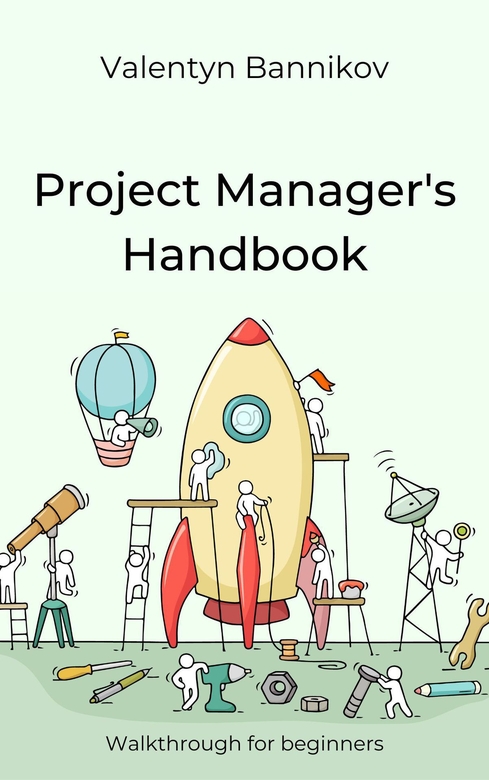
A matter-of-fact breakdown of a complex, dynamic, and essential position, Project Manager’s Handbook: Walkthrough for Beginners by Valentyn Bannikov is a comprehensive guide with an original lens.
Beginning with the most basic definition of a project and scaling up the discussion to the innumerable nuances of running an effective project team, this book is intuitively structured and designed for all levels of experience. Even the simplest concepts are illuminated with a fresh rhetorical perspective, from the unique aspects that define a project, versus a basic act of production, to new frameworks for conceptualizing scope, time, and cost for individual situations.
The book covers industry-standard explanations of project life cycles and management structures, which change infrequently in their descriptions across resources, but as the author probes further into these subjects, new ideas and perspectives emerge. The time spent on different types of project management, particularly project portfolio management, is a deep-dive aspect of this text that other books on the subject do not always feature. By outlining the responsibilities, authorities, and expectations of a project manager, as well as the flexible scope and breadth of their potential work, Bannikov gives a clear picture for prospective PMs and a detailed overview for veterans.
Overall Bannikov succeeds in providing a variety of lessons and perspectives, but some sections may feel overly simple, or deliberately vague, and lacking in a degree of relatable, real-world examples. Despite 9+ years in project management, there is a lack of anecdotal examples drawn from the author’s lived experience, as the book relies mostly on hypothetical, academic, or theoretical situations. This seems like a missed opportunity, especially when compared to other books in this niche, which are often focused on real-world situations and how certain practices can and have been implemented.
Similarly, though the author presents a number of analytical tools and management approaches, there aren’t many direct-action practices or exercises. Many of the ideas presented here are abstract, such as communication strategies or conflict resolution tools, which readers can choose to apply a la carte, but the book could have used more direct instruction, as these ideas seem more motivational than practical – useful, to be sure, but without more actionable information, some of these concepts might not be implemented to full effect.
There are also slips throughout the prose, such as the misuse of closely related words (e.g. “It is often enough” vs “It is common enough”). These linguistic tangles are coupled with occasional grammatical errors, missing commas that confuse sentence structure, and inconsistent gendering, i.e., shifting back and forth between “he or her.” A basic proofread would clear up these errors, which do undercut the book’s authority somewhat about organization and management, which is unfortunate, as the book is full of valuable information otherwise.
On the whole, for anyone who needs to better understand the role and realm of project managers, or wants to sharpen their own skill set in this area, Project Manager’s Handbook is an effective guide for beginners, as well as something you can return to throughout your career.
Book Links
STAR RATING
Design
Content
Editing
Get an Editorial Review | Get Amazon Sales & Reviews | Get Edited | Get Beta Readers | Enter the SPR Book Awards | Other Marketing Services























Leave A Comment